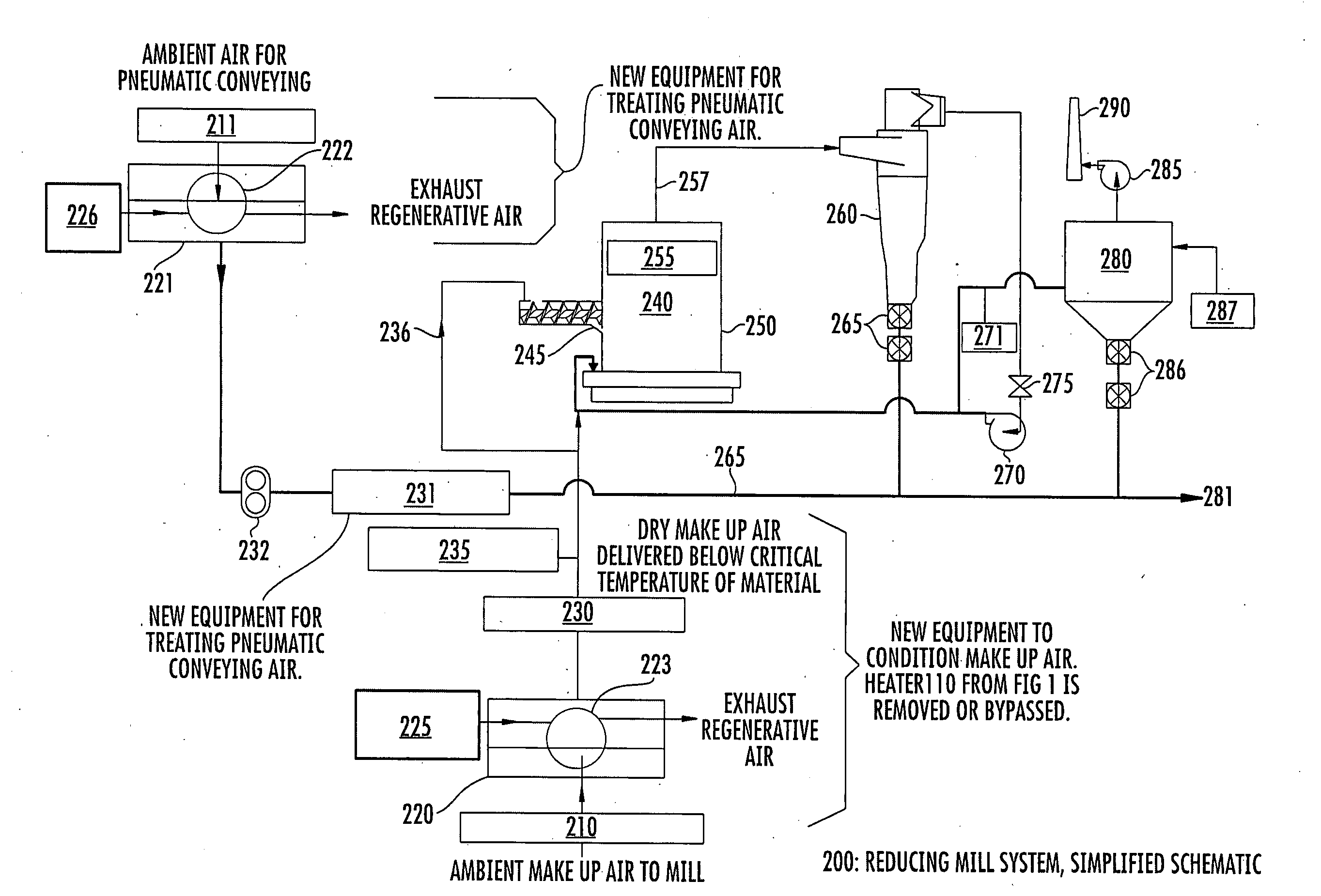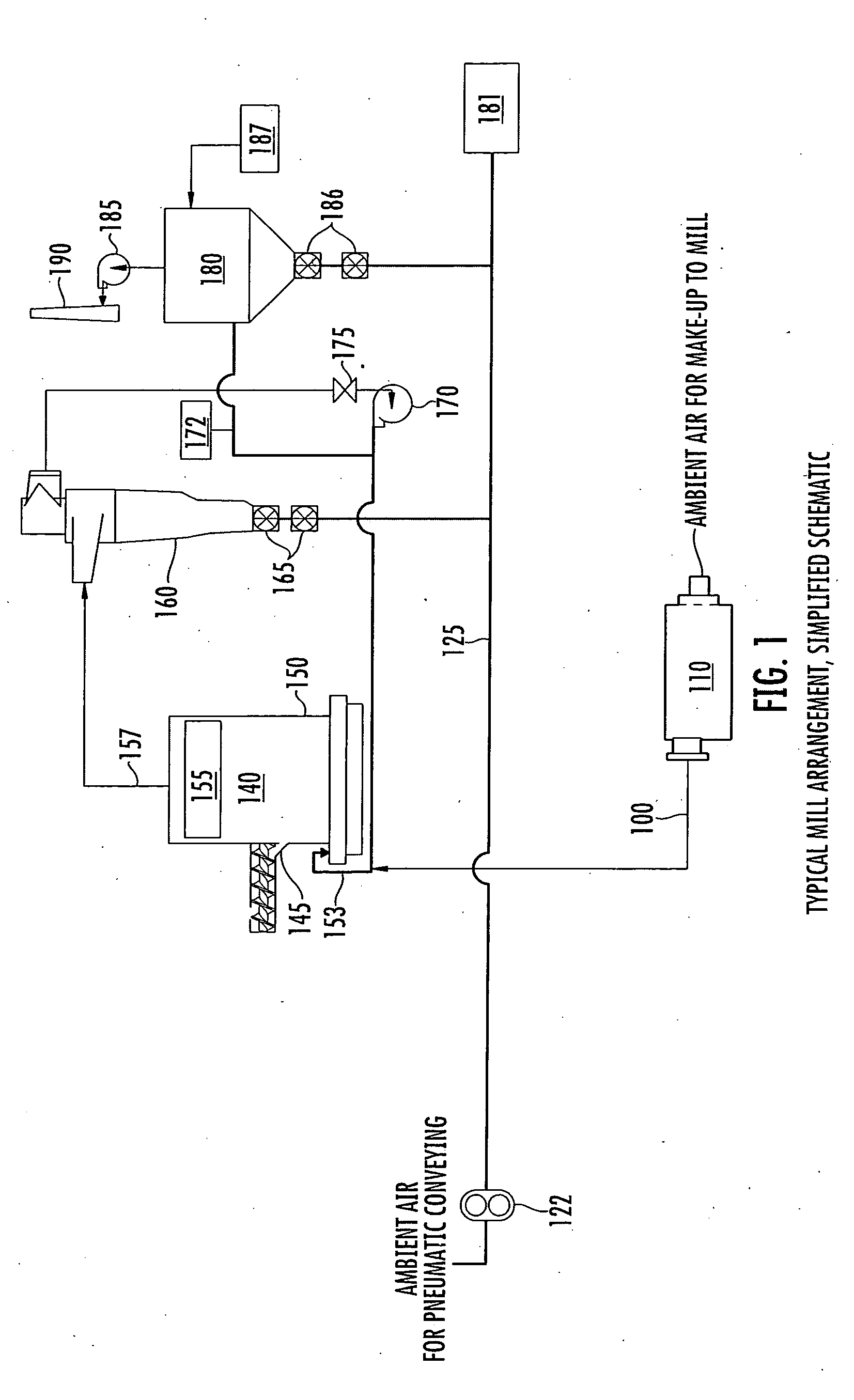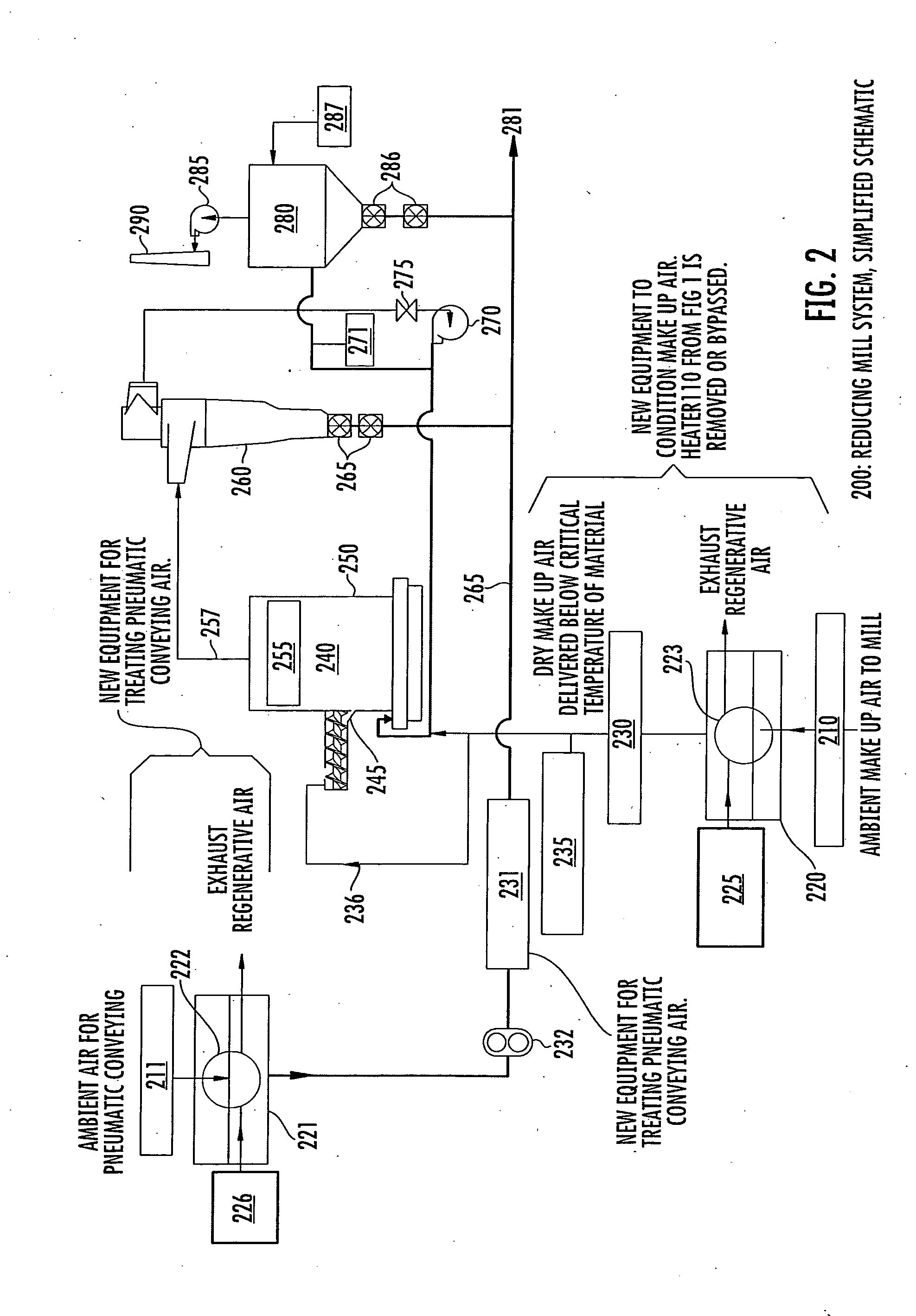System and method for processing hygroscopic materials
a technology of hygroscopic materials and processing methods, applied in chemical instruments and processes, alkali metal carbonates, grain treatment, etc., can solve the problems of ineffective traditional milling and drying methods, ineffective sodium sesquicarbonate ore, and small particles that join together to form agglomerations, etc., to achieve the effect of maximizing the operating temperature of the mill
- Summary
- Abstract
- Description
- Claims
- Application Information
AI Technical Summary
Benefits of technology
Problems solved by technology
Method used
Image
Examples
example 1
Typical Milling Arrangement of FIG. 1
[0064]Referring once again to FIG. 1, trona ore was used to test the results of milling or reducing a temperature sensitive, hygroscopic material in a typical mill arrangement where high temperature gases, in this case heated air, are used to facilitate rapid drying of the raw material during the milling or reducing process. Laboratory tests of the configuration of FIG. 1, began with the milling of raw material without utilizing heater 110. Since the free moisture of the raw material was not thought to be very high, reducing mill 140 was first operated without the use of any ancillary equipment to drive off moisture. This resulted in a finished product that significantly exceeded maximum free moisture levels of 0.04% free moisture.
[0065]Attempts In the laboratory to employ the standard methods of drying the material within the roller mill were also not successful. The typical method for drying raw material in a reducing mill is a heater. The heat...
example 2
System of the Present Invention
[0070]Following the unsatisfactory results of the laboratory tests described in Example 1 above, the principals of the present invention were applied to a field test of a 66-inch Raymond, vertical ring, air swept roller mill. FIG. 2 shows the arrangement of the equipment utilized during the field test. Once again, trona ore was selected as the raw material.
[0071]The required level of drying required to reduce the free moisture content of the milled trona ore to 0.04% (by weight) or lower, without exceeding the calcinations temperature, was achieved by modifying the pretreatment system in the make-up air supply to reducing mill 240. In particular, instead of preheating the make-up air to a high temperature using a natural gas or electric heater, the make-up air was cooled, dehumidified, and, when necessary, reheated to a value equal to or below a predetermined critical temperature. The intent was to provide make-up air that was essentially at 0% relativ...
PUM
 Login to View More
Login to View More Abstract
Description
Claims
Application Information
 Login to View More
Login to View More - R&D
- Intellectual Property
- Life Sciences
- Materials
- Tech Scout
- Unparalleled Data Quality
- Higher Quality Content
- 60% Fewer Hallucinations
Browse by: Latest US Patents, China's latest patents, Technical Efficacy Thesaurus, Application Domain, Technology Topic, Popular Technical Reports.
© 2025 PatSnap. All rights reserved.Legal|Privacy policy|Modern Slavery Act Transparency Statement|Sitemap|About US| Contact US: help@patsnap.com



